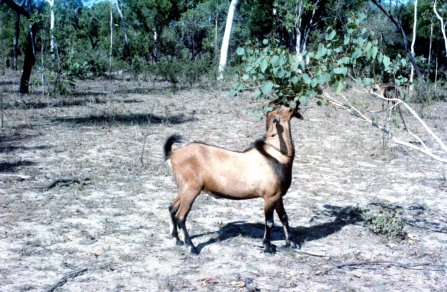Problem: Your goats are affected by worms most or all year-round and control is difficult to achieve.
Solution: Consider using plants that have anthelmintic properties (they reduce worm burdens) and including browse species as part or all of their diet.
Benefit: Some pasture and browse species, when grazed or fed as hay, can reduce worm burdens in goats. Additionally, good nutrition allows goats to better resist and cope with worms. Browsing reduces exposure to worms because worm larvae cannot move more than 15 cm or so above the ground.
Most of these species are naturally high in tannins, and goats, unlike some other species, do not reject high tannin plants. While some high tannin plants have only marginal anthelmintic effects, others, such as sericea lespedeza, when used as the sole source of nutrition for a period, have resulted in good reductions of worm egg counts and worm burdens.
The most promising species showing some anthelmintic properties are
Forage plants with anthelmintic effects can be
The success of such a regimen for worm control depends on sufficient plant material being eaten by animals, and the type and concentration of plant active constituents, which will vary with climatic, soil, harvesting and processing conditions.
Moderate levels of condensed tannins in forages, in addition to anthelmintic properties, are thought to prevent bloat and protect protein against degradation in the rumen, but at high levels can lower fodder digestibility and palatability. Any alternate forage then must be of high nutritional value and high palatability, and easily cultivated and propagated.
Browsing effectively separates the goat’s mouth from worm larvae on pasture grass. If a goat is grazing with its head up, it will not ingest worm larvae, which are rarely higher than 15 cm on a pasture.
Thick stands of leucaena, tagasaste or native shrubs, with little grass between the bushes, provide good browse. Goats are, however, very rough on browse and can ringbark or break branches. Careful management is needed to preserve them.

References